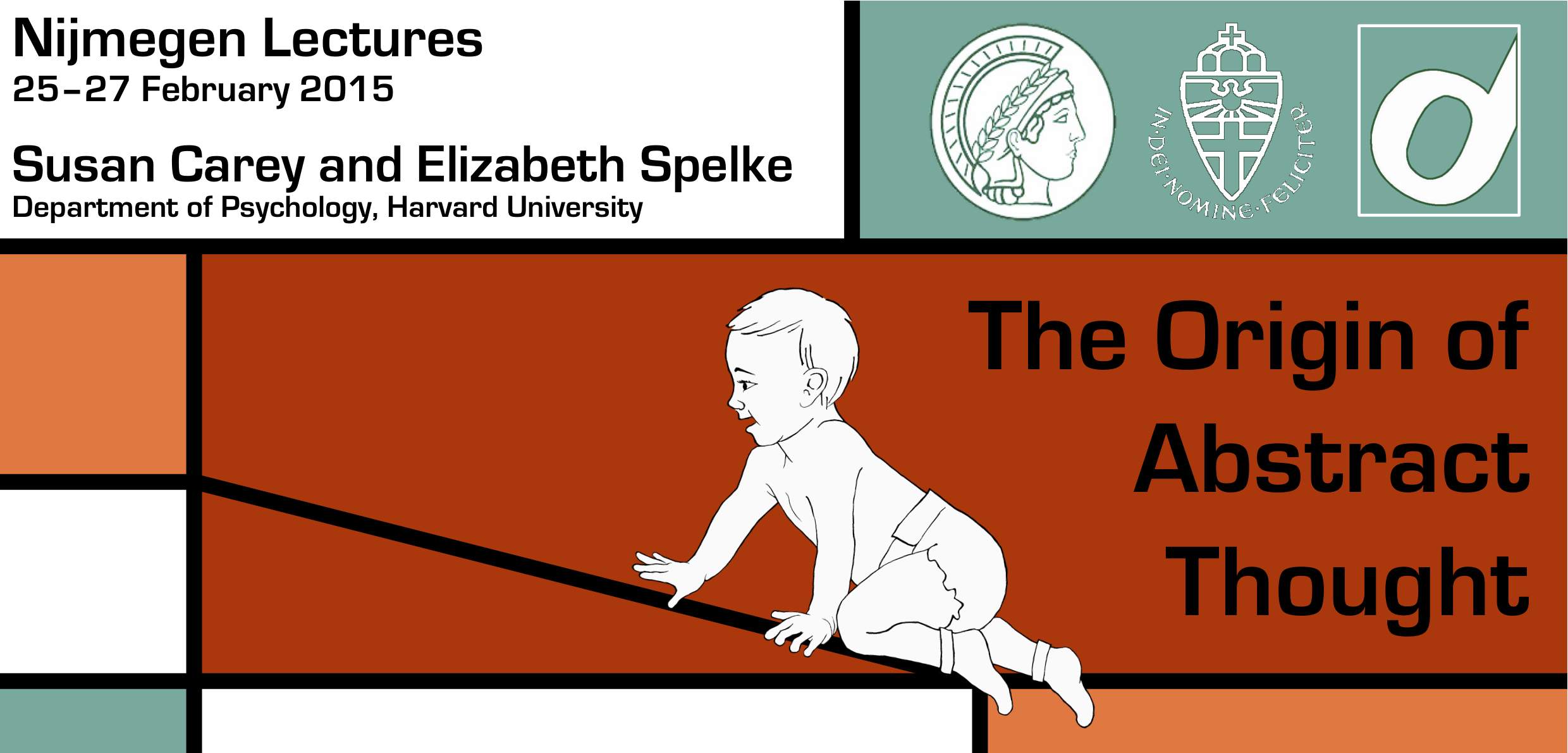Nijmegen Lectures 2015
by Elizabeth Spelke and Susan Carey

A scientific account of human concepts and conceptual development must characterize the content, format, and functional roles of both the innate and the mature conceptual repertoire, as well as the developmental processes that operate on the former to produce the latter. The evidence for innate sensory, perceptual, and motor representations is overwhelming; much recent work has provided evidence for richer primitives with content such as agent and object as well. But the adult conceptual repertoire includes explicit abstract concepts supporting natural language, spatial symbols, measurement, mathematics and logic. We will provide evidence for innate content in each of these domains, and explore the hypotheses that the representational systems that express that content nonetheless are qualitatively different from those that are realized in the adult state. These issues will be explored in three case studies: representations of number, geometry, and of logical connectives and abstract relations.
Lecture 1: Number
We characterize three distinct systems of representation with numerical content, sketching the evidence that each is innate and that each continues to play a role in thought throughout all of human life. They are the approximate number system (ANS; Dehaene’s “number sense”), a system of parallel individuation (PI) supporting working memory models of small sets, and the set-based quantificational machinery of natural language that serves to represent quantifiers, determiners, and number morphology. We submit that these are the only three systems of number representation that are attested in early development, and we argue that none has the expressive power to represent the positive integers. Thus, the acquisition of the first representations of integers (the meanings of verbal numbers supported by the counting principles) constitutes a developmental discontinuity. Consistent with this analysis, we show that integer representations are difficult for children to acquire, and we explore the conditions that modulate their acquisition. We end with two different proposals concerning the learning mechanisms that create this new representational resource.
Discussants
Harold Bekkering, Radboud University Nijmegen, Netherlands
Andrea Bender, University of Bergen, Norway
Lecture 2: Geometry
The basic concepts of Euclidean plane geometry are highly intuitive to adults in diverse cultures, but their origins are obscure. How do we come to conceive of lines so long that they never end, and points so small that they have no size? Converging research on non-human animals, on human adults in diverse cultures, and especially on human infants and children suggests that abstract geometry develops from two core cognitive systems, each focused on a limited subset of geometric properties. These systems were shaped, over evolution, to solve basic cognitive problems faced by humans and other animals. One system uses distance and directional relationships in the navigable surface layout to determine one's position and heading. The other system uses angle and length relationships among the parts of objects to determine an object's kind or function. I propose that children develop abstract and general geometrical concepts by using symbols, especially language, gesture, pictures and maps, to combine productively the information captured by these systems, and discuss some recent evidence that bears on this proposal. I end by speculating that the combinatorial machinery supporting the development of abstract geometry supports a wide range of uniquely human capacities, including our highly developed capacities for social cognition and cooperation.
Discussants
Christian Doeller, Radboud University Nijmegen, Netherlands
Andrea Frick, University of Fribourg, Switzerland
Lecture 3: Logic / Abstract Relations
Philosophers and cognitive scientists have debated whether some non-linguistic creatures (complex non-human animals/prelinguistic infants) form conceptual representations with propositional content, with a language/like, logic/like combinatorial structure. Some have argued that the answer is clearly NO (e.g., Davidson, Bermudez, Penn et al., Piaget) whereas others have argued that the answer is clearly YES (e.g., Fodor, Crain). Clearly, this is an empirical question. Taking two case studies (logical connectives; especially not and or, and the abstract relational concepts same and different), I explore how to bring empirical data to bear on this question as well as begin to explore what the question comes to, and present some early results from this research program.
Discussants
Bart Geurts, Radboud University Nijmegen, Netherlands
Ágnes M. Kovács, Central European University, Budapest
Organizers
Marisa Casillas
Sarah Gerson
Asli Ozyurek
Irina Simanova
Sharon Unsworth
Location
Radboud University Nijmegen, Aula, Comeniuslaan 2, Nijmegen
Max Planck Institute for Psycholinguistics, Wundtlaan 1, Nijmegen
Share this page